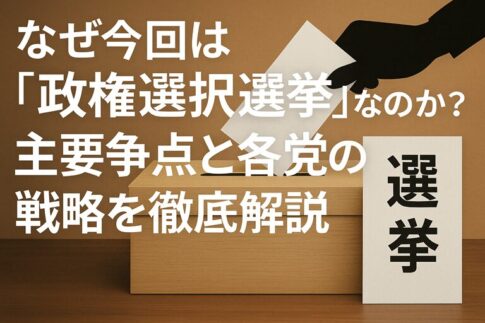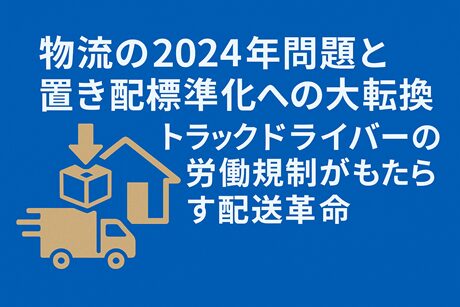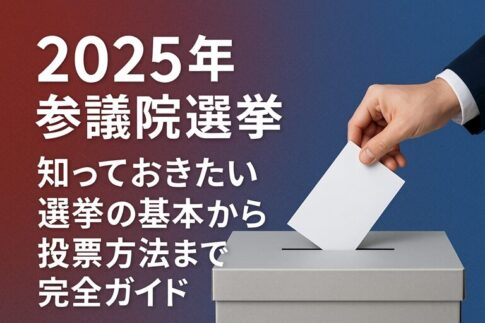目次
- 1 2025 Japan House of Councillors Election: Everything You Need to Know
- 1.1 1. Understanding Japan’s House of Representatives and House of Councillors
- 1.2 2. Differences Between House of Councillors and House of Representatives Elections
- 1.3 3. Overview of This Election
- 1.4 4. Understanding the Electoral System
- 1.5 5. Summary of Party Platforms
- 1.5.1 Liberal Democratic Party (LDP)
- 1.5.2 Constitutional Democratic Party (CDP)
- 1.5.3 Japan Innovation Party (Ishin)
- 1.5.4 Komeito
- 1.5.5 Democratic Party for the People (DPFP)
- 1.5.6 Japanese Communist Party (JCP)
- 1.5.7 Reiwa Shinsengumi
- 1.5.8 Sanseito
- 1.5.9 Social Democratic Party (SDP)
- 1.5.10 Japan Conservative Party
- 1.5.11 Other Parties
- 1.6 6. How to Vote and Early Voting
- 1.7 7. Voter Reactions on Social Media
- 1.8 8. Advice for First-Time Voters
- 1.9 9. Conclusion: Your Vote Shapes the Future
2025 Japan House of Councillors Election: Everything You Need to Know
On Sunday, July 20, 2025, Japan will hold its 27th House of Councillors regular election. Elections are crucial opportunities that directly impact our lives, but many people wonder: “What is the House of Councillors?” or “How do I vote?” This article provides a comprehensive guide to everything from the electoral system to voting procedures.
1. Understanding Japan’s House of Representatives and House of Councillors
Japan’s Parliament Consists of Two Houses
Japan’s National Diet consists of two houses: the House of Representatives (Shūgiin) and the House of Councillors (Sangiin). This system is called “bicameralism”.
Why Two Houses?
The bicameral system offers these advantages:
- Careful deliberation: One house reviews decisions made by the other, leading to better conclusions
- Diverse opinions reflected: Different electoral systems and terms allow a wider range of public voices in politics
- Prevents concentration of power: The two houses check each other, enabling balanced governance
Historical Background
The current Diet evolved from the Imperial Diet established in 1890 (Meiji 23). Originally consisting of the House of Representatives and the House of Peers, the latter was abolished when the Constitution of Japan took effect in 1947 (Showa 22), replaced by the House of Councillors.
The current Diet Building was completed in 1936 (Showa 11), with the House of Representatives on the left and the House of Councillors on the right when viewed from the front.
| Country | System | Notes |
|---|---|---|
| Japan | Bicameral | House of Representatives & House of Councillors |
| United States | Bicameral | House & Senate |
| United Kingdom | Bicameral | House of Commons & House of Lords |
| Germany | Bicameral | Bundestag & Bundesrat |
| France | Bicameral | National Assembly & Senate |
※All G7 summit participating countries have adopted bicameral systems
2. Differences Between House of Councillors and House of Representatives Elections
There are significant differences in terms and electoral systems between the House of Councillors and House of Representatives. Understanding these characteristics clarifies the meaning of this election.
| Item | House of Councillors | House of Representatives |
|---|---|---|
| Number of Members | 248 (148 constituency, 100 proportional) | 465 (289 constituency, 176 proportional) |
| Term | ⏱️ 6 years (no dissolution) | ⏱️ 4 years (can be dissolved) |
| Elections | Half (124) elected every 3 years | All members elected at term end or dissolution |
| Age Requirement | 👤 30 years or older | 👤 25 years or older |
| Role | “House of Review” Long-term perspective & careful debate | “Decision-Making House” Quick decision-making |
| Characteristics | Less affected by government changes Emphasizes continuity & stability | Quickly reflects public opinion Nominates Prime Minister |
Unique Features of the House of Councillors
- Half-term elections: Only half are elected every 3 years, maintaining continuity
- No dissolution: Unlike the House of Representatives, members can work on policies for the full 6 years
- Emergency sessions: Can hold emergency sessions when the House of Representatives is dissolved
Supremacy of the House of Representatives
The Constitution grants the House of Representatives stronger powers in certain areas when the two houses disagree. This is called “supremacy of the House of Representatives”.
- Budget decisions
- Treaty approval
- Prime Minister nomination
- Re-passing bills (requires 2/3 majority of members present)
3. Overview of This Election
Basic Election Information
| Official Name | 27th House of Councillors Regular Election |
| Announcement Date | Thursday, July 3, 2025 |
| Election Date | Sunday, July 20, 2025 |
| Seats Up for Election | 125 (Regular 124 + 1 Tokyo vacancy) |
| Number of Candidates | 522 (fewer than last election) |
Key Features of This Election
- Inflation measures as the main issue: All parties are emphasizing their responses to rising prices
- Tokyo constituency vacancy: In addition to regular elections, there’s one vacancy to fill in Tokyo
- Focus on ruling party majority: With a minority government in the House of Representatives, securing a stable majority in the House of Councillors is crucial
Seats by Constituency
| Constituency | Seats | Notes |
|---|---|---|
| Tokyo | 6+1 | Regular 6 + vacancy 1 |
| Kanagawa | 4 | – |
| Osaka | 4 | – |
| Aichi | 4 | – |
| Saitama | 4 | – |
| Chiba | 3 | – |
| Tottori-Shimane | 1 | Merged constituency |
| Tokushima-Kochi | 1 | Merged constituency |
4. Understanding the Electoral System
The House of Councillors election uses a “two-vote system”. This means you receive two ballot papers at the polling station and vote differently on each.
Constituency Election (First Ballot)
Basic System
- How to vote: Write the candidate’s name
- Districts: Prefectural units (except Tottori-Shimane and Tokushima-Kochi merged constituencies)
- Winner determination: Candidates with the most votes win, up to the district’s quota
About Merged Constituencies
Introduced in 2016, this system combines two adjacent prefectures with small populations into one constituency. Currently there are two:
- Tottori-Shimane constituency
- Tokushima-Kochi constituency
Proportional Representation (Second Ballot)
Basic System
- How to vote: Write either party name or candidate name
- District: Nationwide
- Seats: 50
What is the Open-List System?
In the House of Councillors proportional representation, candidate lists don’t have predetermined rankings. Winners are determined by individual vote counts within each party’s allocated seats.
- Tally each party’s total votes (party votes + individual votes)
- Determine each party’s seats using the D’Hondt method
- Winners determined by individual vote counts within each party
Special Provision System (Introduced 2019)
A system allowing parties to designate candidates who win preferentially in predetermined order.
- Winners determined by list order regardless of individual votes
- Special provision candidates cannot conduct individual campaigns
- Designed to elect important personnel without nationwide support bases
Seat Allocation Method (D’Hondt Method)
The D’Hondt method is used to allocate proportional representation seats.
| Party | Votes | ÷1 | ÷2 | ÷3 | Seats Won |
|---|---|---|---|---|---|
| Party A | 12 million | 12 million① | 6 million③ | 4 million⑤ | 3 seats |
| Party B | 9 million | 9 million② | 4.5 million④ | 3 million | 2 seats |
| Party C | 3 million | 3 million | 1.5 million | 1 million | 0 seats |
※Seats allocated in order of largest numbers (5 seats allocated in this example)
5. Summary of Party Platforms
In this House of Councillors election, various parties are proposing policies centered on measures against inflation. Here’s a clear summary of major party platforms.
📊 Looking for more detailed analysis?
We have an article with even more detailed comparison and analysis of each party’s policies.
👉 【2025 House of Councillors Election】Thorough Analysis of Party Policies! Which Party Suits You?
Liberal Democratic Party (LDP)
【Slogan】Move Japan Forward, Enrich Lives
Main Policies
- Inflation Measures
- Achieve wage increases exceeding inflation
- Subsidies for struggling households
- Electricity and gas bill support
- Economic Policy
- Virtuous cycle of growth and distribution
- Three-pronged labor market reform (reskilling, job-type employment, smooth labor mobility)
- Concentrated investment in GX, DX, and startups
- Social Security
- Build all-generation social security
- Raise basic pension levels
- Realize a child-centered society
- Security
- Strengthen defense based on Japan-US alliance
- Possess counterstrike capabilities
- Enhance capabilities in space, cyber, and electromagnetic domains
Constitutional Democratic Party (CDP)
【Slogan】Protect You from Inflation
Main Policies
- Inflation Measures
- Reduce consumption tax on food from 8% to 0% (1-year limited measure)
- Introduce tax credit with benefits
- Dining table support payment (20,000 yen immediate payment)
- Economic Policy
- Achieve 3% nominal wage growth
- Focus investment in GLLD sectors (green energy, healthcare/nursing, agriculture/tourism, digital)
- Raise minimum wage to 1,500 yen or more early
- Social Security
- Oppose raising high-cost medical care self-payment limits
- Pension enhancement bill
- Create comprehensive total system
- Others
- Realize zero nuclear society
- Introduce selective separate surnames
Japan Innovation Party (Ishin)
【Slogan】Reform That Cuts Its Own Fat, In Progress
Main Policies
- Inflation Measures
- Zero consumption tax on food for 2 years
- Reduce social insurance premiums
- Lighten burden on working generation
- System Reform
- Transition pension system from pay-as-you-go to funded
- Eliminate Tokyo concentration (Osaka sub-capital plan)
- Introduce regional state system
- Labor Market Reform
- Introduce flexicurity (flexibility + security)
- Deregulate ridesharing and other industries
- Review dismissal regulations
Komeito
【Slogan】The Power to Listen to Small Voices
Main Policies
- Inflation Measures
- Implement both tax cuts and benefits
- Permanently lower reduced consumption tax rate on food
- Abolish provisional gasoline tax rate
- Social Security
- Build creative welfare society
- Oppose raising high-cost medical care self-payment limits
- Promote medical and nursing care DX
- Child Support
- Expand free education
- Enhance child allowances
- Realize child-centered society
Democratic Party for the People (DPFP)
【Slogan】Summer to Increase Take-Home Pay
Main Policies
- Take-Home Pay Enhancement
- Tax cuts, reduce social insurance premiums
- Lower gasoline and electricity prices
- Create wage increase reserve system
- Double Salaries for Specific Occupations
- Double salaries for care workers, nurses, childcare workers
- Review regional allowances
- Education/Childcare
- Issue education bonds
- Abolish child/childcare support fund
Japanese Communist Party (JCP)
【Slogan】Hope for Living
Main Policies
- Consumption Tax Measures
- Aim to abolish consumption tax, urgently reduce to 5%
- Strengthen taxation on large corporations and wealthy
- Social Security
- Introduce minimum guaranteed pension
- Reduce medical expense copayments
- Lower national health insurance premiums
- Others
- Stop massive military expansion
- Immediate zero nuclear power
- 1,500 yen minimum wage
Reiwa Shinsengumi
【Slogan】Let’s Start This Country Over
Main Policies
- Expansionary Fiscal Policy
- Abolish consumption tax
- 30,000 yen monthly cash payment
- Active fiscal spending
- Labor Policy
- 1,500 yen minimum wage (government subsidized)
- 100,000 yen monthly raise for care/childcare workers
- Convert irregular to regular employment
- Energy Policy
- Immediate nuclear power abolition
- Reiwa Green New Deal (200 trillion yen investment)
- Decommissioning New Deal
Sanseito
【Slogan】Japan First
Main Policies
- Economic Policy
- Economic recovery through expansionary fiscal policy
- 0% consumption tax on food
- Policies to protect Japanese livelihoods
- Childcare/Security
- Enhanced child support
- Strengthen public safety
- People-centered “popular sovereignty politics”
- Foreign Worker Policy
- Prioritize those with advanced skills and expertise
- Require Japanese language ability and cultural understanding
- No voting rights or referendum rights for foreigners
Social Democratic Party (SDP)
【Slogan】Hope for Living
Main Policies
- Inflation Measures
- Immediate zero consumption tax on food
- Implement emergency living support measures
- Policies to support daily life
- Social Security
- Enhance social security system
- Policies to reduce inequality
- Politics that supports the vulnerable
- Peace Policy
- Uphold Article 9 of the Constitution
- Promote peace diplomacy
- Oppose military spending increases
Japan Conservative Party
【Slogan】Take Back Japan
Main Policies
- Tax Reduction Policy
- Permanent 0% consumption tax on food (including alcohol)
- Promote local tax cuts nationwide
- Cut gasoline tax and income tax
- Security
- Enact anti-espionage law
- Establish intelligence agency
- Promote support for defense research
- Constitutional Amendment
- Delete Article 9, Paragraph 2
- Specify possession of self-defense forces
- Strengthen pressure to resolve North Korean abduction issue
Other Parties
Minna de Tsukuru Party: Opposition to increased pension/social insurance burdens, creating a society that protects those seeking help
NHK Party: Illegal immigration countermeasures, strengthening territorial sovereignty, importance of national defense
Saisei no Michi: Prioritize education, policies to enhance individual capabilities
Team Mirai: Youth political participation, political reform through technology utilization
| Party | Consumption Tax | Benefits | Other Measures |
|---|---|---|---|
| LDP | Maintain current rate | Benefits for low-income | Wage promotion, utility subsidies |
| CDP | Food 0% (1 year) | 20,000 yen immediate | Tax credit with benefits |
| Ishin | Food 0% (2 years) | – | Lower social insurance |
| Komeito | Permanent rate reduction | Implement benefits | Abolish gas tax |
| DPFP | Temporary 5% cut | Inflation allowance | Gasoline subsidy |
| JCP | Abolish (urgent 5%) | – | Tax corporations/wealthy |
| Reiwa | Abolish | 30,000 yen/month | Expansionary fiscal policy |
| Sanseito | Food 0% | – | Expansionary fiscal, child support |
| SDP | Food immediate 0% | Emergency support | Life support policies |
| Conservative | Food permanent 0% | – | Local/gas/income tax cuts |
※Highlighted items are particularly notable policies
6. How to Vote and Early Voting
Voting Process (Election Day)
- Bring voting admission card
- Sent by mail in advance
- You can still vote with ID if you lose it
- Identity verification at reception
- Submit admission card
- Check against voter registry
- Receive 2 ballot papers
- Constituency ballot (write candidate name)
- Proportional ballot (write party or candidate name)
- Fill in at voting booth
- Use pencil (pen also acceptable)
- If you make a mistake, ask staff for a new ballot
- Cast into ballot box
- Different boxes for constituency and proportional ballots
- Be careful not to mix them up
About Early Voting
Period
July 4 (Fri) – July 19 (Sat), 2025
※You can vote on weekends too
Hours
Generally 8:30 AM – 8:00 PM
※May vary by location
Locations
- City/ward/town/village offices
- Shopping centers
- University campuses
- Train stations, etc.
※Locations vary by municipality
What to bring
- Voting admission card (not required)
- ID for verification
Reasons for early voting (write on declaration)
- Work or study
- Travel or leisure
- Ceremonies
- Illness or injury
- Other unavoidable business
※Reasons are broadly accepted; “leisure” is perfectly fine
Absentee Voting
If you’re away from your registered address for business or travel, you can vote at the election commission in your current location.
- Request ballot from your home election commission
- Ballot arrives by mail
- Vote at local election commission
Overseas Voting
Those living abroad can vote if registered on the overseas voter list through:
- Voting at diplomatic missions
- Postal voting
- Voting in Japan
Important Notes When Voting
- Write accurately: Write candidate/party names correctly
- Don’t write extra things: Writing unrelated things invalidates your vote
- Proxy voting: Those with disabilities can ask staff to write for them
- Braille voting: Voting in Braille is also possible
7. Voter Reactions on Social Media
Various voter opinions about this House of Councillors election are emerging on X (formerly Twitter). Particularly notable are reactions from younger generations, questions about the electoral system, and concerns about misinformation.
Interest in the Election
Serious Political Apathy Among Youth
Surveys show voter turnout among people in their 20s is about 35%, less than half compared to 71% for those in their 60s. Common sentiments on social media include:
- “Nothing changes even if I vote” (Male, 20s)
- “My single vote doesn’t change anything” (University student)
- “Politics is too difficult to understand” (Female, teens)
Hesitation and Guilt About Not Voting
Meanwhile, many express guilt about not voting, revealing a paradox where 61% of university students show interest in politics while 63.6% believe “society won’t change even if I vote”.
Reactions to Party Platforms
Evaluations of Inflation Measures
- Criticism of cash handouts
- “20,000 yen handout is just election-targeted spending”
- “Temporary measures don’t solve fundamental problems”
- Expectations for consumption tax cuts
- “54.1% want consumption tax reduced”
- “Salaries don’t rise but prices do, 10% consumption tax is too harsh”
- “At least make food consumption tax zero”
※For detailed policy analysis of each party, see this article
Questions About Voting Methods
Questions About Early Voting
- “What should I write on the early voting declaration?”
- “Can I early vote for leisure reasons?”
- “Can I vote if I lost my admission card?”
Confusion About the Electoral System
- “Should I write party name or candidate name?”
- “What’s the special provision? It’s undemocratic to win regardless of individual votes”
- “The proportional representation system is too complex”
Mixed Reactions to Celebrity Candidates
| Positive Opinions | Negative Opinions |
|---|---|
| “Celebrities make elections more interesting” | “Celebrity candidates who can’t discuss policy are just attractions” |
| “Celebrities with expertise can be expected to perform” | “Winning just on name recognition is problematic” |
| “They might bring fresh perspectives” | “No response on candidate questionnaires? Where’s the motivation?” |
Concerns About Misinformation
Shocking Survey Results
According to a Ministry of Internal Affairs survey, 47.7% of people who encounter misinformation believe it, and 25.5% spread that information.
Examples of Spread Misinformation
- “Pencil votes can be rewritten” (baseless conspiracy theory)
- “Early voting is a hotbed of fraud” (completely false)
- “XX party is hiding YY policy” (hoax)
Importance of Fact-Checking
Organizations like the Japan Fact Check Center (JFC) are verifying election-related misinformation, though some express skepticism: “Who checks the fact-checkers?”
First-Time Voter Voices
Anxieties and Questions
- “I don’t understand politics, should I vote?”
- “I haven’t moved my residence certificate, can I vote at home?”
- “I don’t understand the difference between constituency and proportional representation”
Positive Voices
- “First time voting, nervous but I’ll go”
- “Made plans to go to the polling station with friends”
- “Finally understood policies after watching YouTube explanation videos”
8. Advice for First-Time Voters
Pre-Voting Preparation
- Check your voting admission card
- Arrives by mail about a week before election day
- Confirm polling station location and hours
- Research candidates and parties
- Read election bulletins (booklets with all candidate information)
- Check policies on party official websites
- Check candidate social media and websites
- Practice voting
- Confirm correct spelling of candidate/party names
- Hiragana is OK if you don’t know the kanji
FAQ
| Question | Answer |
|---|---|
| I lost my admission card | You can vote with ID. Bring identification |
| I haven’t moved my residence certificate | You can only vote where registered. Absentee voting procedures needed |
| I don’t know who to vote for | Choose based on policies important to you. No perfect candidate exists |
| My handwriting is messy | It’s fine if readable. Ask staff if concerned |
| What if I’m confused at the polling station? | Staff will kindly help. Don’t hesitate to ask |
Polling Station Etiquette
- Be quiet: Be considerate of other voters
- No photography: Photography generally prohibited inside
- No campaigning: Election campaigning at polls is illegal
- Notes allowed: You can bring notes with candidate names
After Voting
- Post on social media with hashtags like #FirstTimeVoting (keep vote secret)
- Discuss the election with friends and family
- Watch election results coverage
- Monitor activities of elected representatives
9. Conclusion: Your Vote Shapes the Future
The House of Councillors election on July 20, 2025, is a crucial election that will determine Japan’s future. Various parties are proposing policies on issues directly affecting our lives, including inflation measures, social security, and energy policy.
The Meaning of Electoral Participation
- Foundation of democracy: Elections are the most basic way citizens participate in politics
- Responsibility for the future: Today’s choices create Japan 3 and 6 years from now
- Opportunity to make your voice heard: If you don’t vote, your opinion won’t be reflected in politics
Message to Young Generations
You might think “my single vote won’t change anything.” However, it’s also true that low youth voter turnout causes politics to lean toward policies for older generations. Your vote definitely has the power to change the future.
Finally
No party or candidate is perfect. However, it’s important to make the choice you think is “better.” Please use this article as reference and visit your polling station. Your vote creates Japan’s future.
🔍 Want to Learn More?
If you’re unsure which party aligns with your views, please also check our detailed analysis of each party’s policies.
















Leave a Reply